Most deer resistant plants
17 shrubs, perennials and annuals |
(Image credit: Robert Muckley / Getty Images)
If deer are prevalent in your area, then deer resistant plants are an essential addition to your garden.
While deer are shy animals, when hungry they will often stray into gardens and eat prized plants – putting a huge dent in your backyard ideas.
‘One thing to keep in mind is that if the deer are hungry, they will eat just about anything. So even though a plant may be considered deer resistant, it may still be targeted,’ says Jo Ellen Meyers-Sharp, gardening coach and creator of Hoosiergardener , and a member of the National Garden Bureau .
This makes it important to also consider how hardy your plants are, and whether they will easily recover from a deer munching session.
‘Gardeners don’t spend money on their plants to have them be a salad bar for deer, so many gardeners use repellents to keep deer away.’
While you can’t create a 100 per cent deer-proof garden, there is a wide voice of deer resistant plants available to help deter them and minimize any damage.
Best deer resistant plants
Whether you are looking for evergreen shrubs to serve as the backbone of your garden scheme, or annuals to fill in gaps in pots and borders, there are some wonderful deer resistant plants to choose from.
We asked the experts for their top picks.
Deer resistant shrubs
Shrubs provide much of the structure and interest in our gardens year round. Some are evergreen, adding color and interest in every season.
1. Panicle hydrangea
(Image credit: Getty Images)
Panicle hydrangeas – or Hydrangea paniculata – are moderately fast-growing shrubs that are not favored by deer. However, even if they do have a munch, the plants are hardy, so should recover well.
‘Panicle hydrangeas have flowers in the white to pink to light red range. They bloom during the summer months and the flowers last through fall, typically fading to a handsome light tan as temperatures drop before winter,’ says Sam Schmitz, horticulturist for Ball Horticulture .
‘There are many different varieties that range in mature size from 2ft x 2ft to 8ftx8ft. These shrubs are best in full sun but can also tolerate light shade.’
Make sure you know how to grow hydrangeas to get the best out of them.
2. Osmanthus
(Image credit: Clive Nichols / Getty Images)
‘Osmanthus is an easy-to-grow shrub that can tolerate many different soils and light levels. It is often used for hedging and privacy screens,’ says Michael Giannelli of East Hampton Gardens .
It produces a cluster of tiny white flowers that emit a sweet fragrance similar to magnolias and gardenias.
Its scent and the plant’s spiny leaves also make it unappealing to deer. ‘This has the consequence of making them difficult to handle, although there are smoother varieties available, like Carl Wheeler,’ adds Giannelli.
You can grow osmanthus in USDA zones 7-10.
3. Lavender
(Image credit: Adrian Wombwell / Getty Images)
Lavender’s scent may be heavenly to us, but deer tend to dislike it, making it an ideal shrub for your garden.
‘Lavender grows best in well-drained soil with full sun exposure,’ says Lindsey Hyland, founder of Urban Organic Yield .
‘It does not require a lot of maintenance, but can sometimes be susceptible to pests like mites and aphids.’
Learning how to grow lavender is easy for gardeners in most climates, however the plant dislikes humidity. Expect to be able to grow it in zones 5a to 9a.
4. Ninebark
(Image credit: Getty Images)
Ninebark – or Physocarpus opulifolius – is a fast-growing, medium to large shrub that typically produces frothy white flowers in late spring and early summer.
‘To add to this, the plants come in foliage colors of bronze-red, burgundy, purple, chartreuse, and a few others,’ says Schmitz. ‘
'These shrubs are quite lovely and very easy to maintain. They are happiest planted in full sun but can tolerate a few hours of shade a day.’
Ninebark is also a great choice for colder climates, and can be planted in USDA zones 2-7.
5. Japanese andromeda
(Image credit: Getty Images)
Japanese andromeda – or pieris – has a distinctive scent that some gardeners like and others avoid – however, it smells particularly unpleasant to deer.
‘Andromeda is sometimes referred to as the lily of the valley plant as its early spring flowers look similar,’ says Giannelli
‘It is a great evergreen shrub that changes color as the season progresses, setting long clusters of buds in fall for great winter interest.’
However, bear in mind that andromeda are fussy about soil type. ’They need very well-drained acidic soil,’ adds Giannelli.
If your soil is more alkaline, then the best thing to do is to grow them in containers. They should thrive in USDA zones 5-8.
6. Red twig dogwood
(Image credit: Leigh Clapp)
'Red twig dogwoods are mainly grown for their attractive foliage and bright red stems,’ says Schmitz. These particularly come into their own in winter.
The shrubs are deer resistant plants, but if deer do try to eat them, the good news is that red twig dogwoods are fast growing and tolerate harsh pruning, meaning they will easily spring back.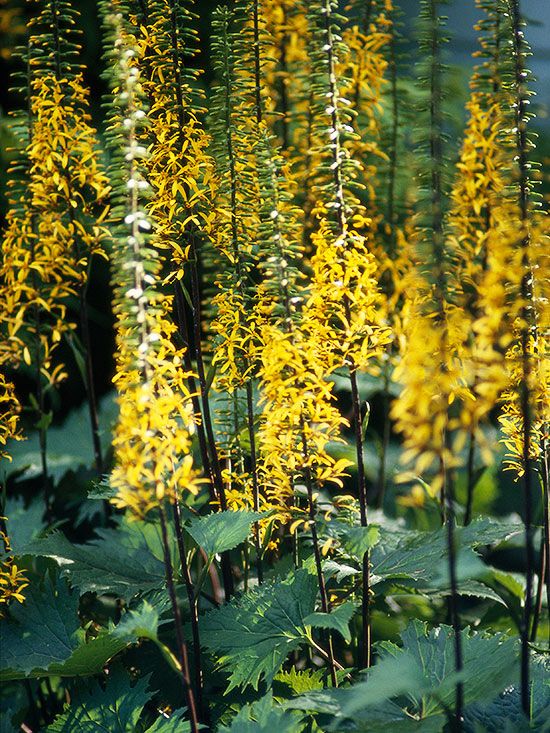
‘They are adaptable to a number of environmental conditions. You can grow them in full sun or up to 50 per cent shade,’ adds Schmitz.
‘Bear in mind that red twig dogwoods can become large over time, but maintaining their size is simple. These can be pruned any time of the year and can be transplanted quite easily.’
Keep on top of maintenance by removing old or diseased canes and keep the shrub looking tidy.
Grow them in USDA zones 3-8, and also consider other types of dogwoods that can be used, which range from medium shrubs to small trees.
Deer resistant perennials
There are many deer resistant perennials available that will make a beautiful feature in your borders. Discover the experts' top picks.
1. Buddleia
(Image credit: Getty Images)
Also known as butterfly bushes for being highly attractive to these precious pollinators, buddleia are not appealing to deer.
‘Though shrubs, buddleia behave more like woody perennials, as in colder areas they dye back almost to the ground each winter and regrow their full size through the season,’ explains Schmitz.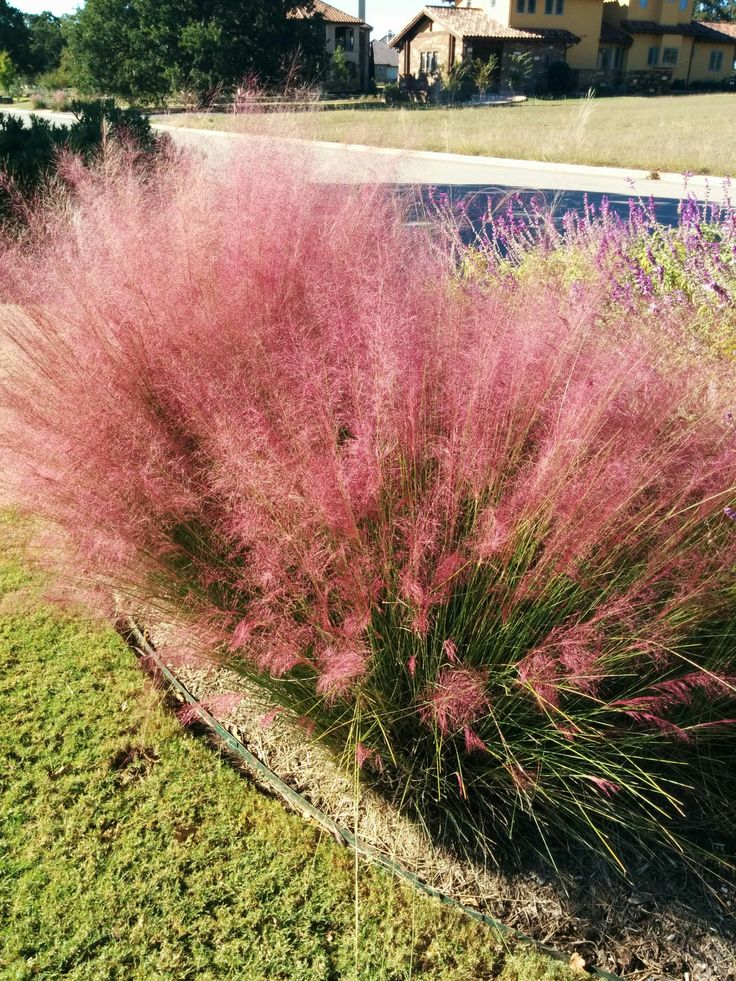
If the plant doesn’t completely die back, it’s a good idea to cut it right back anyway.
‘They grow quickly as they come back up and can reach 6-7 foot tall in a single season. The flowers can be white, blue, cranberry, purple, lavender, and pink with many shades in between.’
Buddleia require full sun in order to thrive, and can be grown in USDA zones 4-10, depending on the variety.
As it grows so fast, ensure you know how to prune buddleia to keep it under control and looking its best.
2. Purple coneflower
(Image credit: Getty Images)
Also known as echinacea, purple coneflower is a popular plant among pollinators – but its fragrance and spiny center make it unappealing to deer.
‘A native perennial, purple coneflower prefers moist, well-drained soils but is drought tolerant once established,’ says Millie Davenport, director of the Clemson Extension Home and Garden Information Center .
The plants die back to the ground over winter, and can grow up to 4 feet tall in the growing season.
‘Not only a great nectar source for pollinating insects, birds also enjoy the seedheads of purple coneflower in the fall,’ adds Davenport.
You should be able to grow purple coneflower in USDA zones 3-9.
3. Bearded iris
(Image credit: Unsplash)
The scent and taste of bearded iris is unpalatable to deer, but its exotic-looking blooms are a beautiful addition to the spring and summer garden.
‘Some varieties, such as Immortality, rebloom in late summer and early fall,’ says Meyers-Sharp.
‘Each flower can be one color or it can have two or more colors.’
You can grow bearded iris in a sunny spot in well-draining soil, in USDA zones 3-9 – learn how to grow irises properly to make sure they flower.
‘Cut back the leaves in the fall,’ adds Meyers-Sharp. ‘When planting, make sure the rhizome (underground stem) is right at, or slightly above the soil surface. If planted too deep, the iris will not bloom.’
4. Baptisia
(Image credit: Getty Images)
'Baptista – or false indigo – is a perennial herb native to much of central and eastern North America, and is a great deer resistant plant,’ says Davenport.
It prefers moist, well-drained soil but is drought tolerant once established. You should be able to grow it in zones 5-9.
‘Though disliked by deer, it is a host plant for the larvae of several butterfly species, including orange sulphur, clouded sulphur, frosted elfin, eastern tailed blue, hoary edge, and wild indigo duskywing,’ adds Davenport.
Deer resistant annuals
Don't forget annuals when choosing deer resistant plants for your garden – these are ideal for filling in gaps and many have a long flowering season.
1. Cosmos
(Image credit: Thompson & Morgan)
Not only are cosmos deer resistant plants, but they are beloved of pollinators, make great cut flowers, and fill out summer borders wonderfully.
‘Cosmos are beautiful airy plants that thrive in full sun, although they’re fine with some shade too,’ says Teri Knight, radio show presenter, and founder of the Garden Bite podcast and website .
‘They are easy to grow handling hot, dry conditions, and you can grow them from seed or potted plants.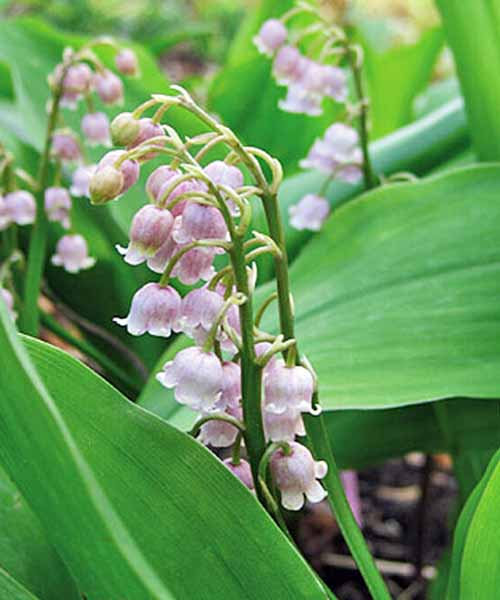 ’
’
It’s so easy to learn how to grow cosmos as an annual in most climates, and they make such an impact in the garden. Choose from dazzling pinks through buttercup yellow and purest white.
2. Flowering tobacco
(Image credit: Getty Images)
‘Flowering tobacco – or Nicotiana alata – has wonderfully fragrant flowers, especially at night, so plant in a sunny area where you can enjoy the perfume,’ says Meyers-Sharp.
However, deer won’t enjoy their heavenly fragrance quite so much, which makes them a great deer resistant plant.
‘Hummingbirds, hummingbird moths and other night pollinators also visit these native plants,’ adds Meyers-Sharp.
‘Nicotiana sylvestris, or woodland flowering tobacco, tolerates shade and is also fragrant.’
As old-fashioned plants, flowering tobacco are also a great addition to your cottage garden ideas, working well in borders and containers.
3. Dusty miller
(Image credit: Getty Images)
Though technically a herbaceous perennial, dusty miller – or Senecio cineraria – is usually grown as an annual, and is prized for its silvery grey foliage that acts as the perfect foil for nearby flowers.
‘Dusty Miller is such a fantastic silver plant that will highlight the colors of other plants,’ says Knight.
It’s adaptable to various soil types, and can cope well with drought-like conditions. Being a Mediterranean plant, it does like full sun, so don’t plant it in the shade.
‘Plant potted plants in the ground or in a container that has good drainage,’ adds Knight.
4. Lantana
(Image credit: Getty Images)
Lantana is another perennial that is grown as a summer annual. ‘If you live in the south and south-west, you may find it to be winter hardy,’ says Meyers-Sharp.
Due to the flowers’ strong fragrance and the plant’s rough texture, lantana is usually avoided by deer. However, it is a magnet for pollinators and hummingbirds.
‘Lantana can take about as much heat and sun as you want to give it. It’s also fairly drought tolerant,’ adds Meyers-Sharp.
It’s ideal for adding to colorful borders and also grows beautifully in containers.
Deer resistant plants for shade
'It’s fairly easy to find deer resistant plants that love the sun, but shade plants can be tricky,' says Knight.
Luckily there are a few great choices to add to shady spots in the garden.
1. Bleeding heart
(Image credit: Getty Images)
Also known as Dicentra spectabilis, bleeding heart is a shade-tolerant herbaceous perennial named for its heart-shaped flowers that is repellant to deer.
Native to woodlands, it pops up in borders in the spring giving much-needed color, before dying back just in time for the summer showstoppers to take its place.
‘Bleeding heart is an old-fashioned plant with plenty of appeal to last,’ says Knight. ‘There are many cultivars now including ‘Golden Hearts Bleeding’ with its chartreuse leaves.
‘Growing to a compact 2ft x 2ft, this beauty tucked in around your hostas just might be able to give them some protection.’
You can grow bleeding heart in USDA zones 3-9.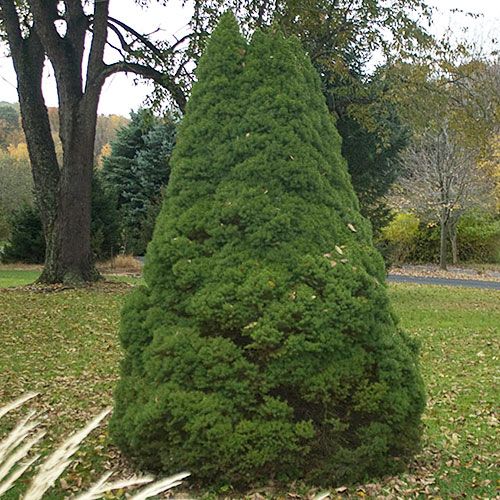
2. Ferns
(Image credit: Getty Images)
Lush leafy ferns tend to be overlooked by deer, but make a lovely textural addition to a shade garden.
‘I particularly like autumn fern, Christmas fern and Japanese painted fern – their height reaches anything from 10-36 inches tall,’ says Davenport.
‘Ferns prefer moist, well-drained soil high in organic matter.’
Their hardiness is dependent on the variety, but you should be able to find ferns to grow in as low as zone 2.
3. Hellebores
(Image credit: Future)
As well as offering winter interest to gardens, hellebores are also highly deer resistant. Evergreen plants with jewel-colored flowers, they will tolerate dry shade.
‘Depending on the variety, hellebores bloom from early winter into June, and they even bloom in snow,’ says Meyers-Sharp.
It’s easy to learn how to grow hellebores , with varieties suitable for USDA zones 3-9.
‘A lot of gardeners trim off the winter-damaged leaves in spring as the plants begin to bloom, but it’s not necessary,’ says Meyers-Sharp.
What plants do deer hate the most?
'Deer generally dislike plants with aromatic foliage, such as rosemary and sage,' says Hyland. 'They also avoid statuesque plants such as yews, hollies, and boxwoods.'
Anything spiny or fuzzy will also be unpalatable to deer – so consider a plant's texture.
What plants do deer eat the most?
Deer tend to adapt well to their local habitat and enjoy many of the plants that are grown there. They particularly enjoy eating tulips and hostas.
'In rural areas, they tend to browse crops such as soybeans, grains, vegetables and fruits,' says Davenport.
'However, the bottom line is that no plant is deer-proof. They prefer some plants over others, but they will eat what is available when they have no other choice.'
For more information, see the Clemson Extension Home & Garden Information Center Website and HGIC Deer Resistant Plants for the Landscape- Annuals & Perennials.
As editor of Period Living, Britain's best-selling period homes magazine, Melanie loves the charm of older properties.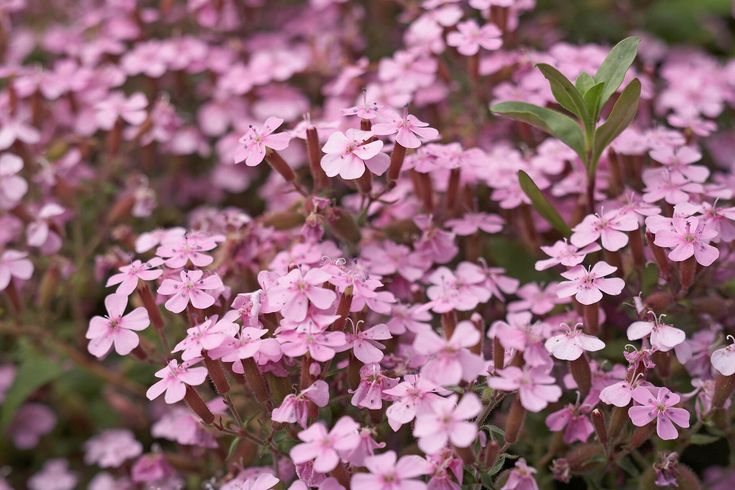 I live in a rural village just outside the Cotswolds in England, so am lucky to be surrounded by beautiful homes and countryside, where I enjoy exploring. Having worked in the industry for almost two decades, Melanie is interested in all aspects of homes and gardens. Her previous roles include working on Real Homes and Homebuilding & Renovating, and she has also contributed to Gardening Etc. She has an English degree and has also studied interior design. Melanie frequently writes for Homes & Gardens about property restoration and gardening.
I live in a rural village just outside the Cotswolds in England, so am lucky to be surrounded by beautiful homes and countryside, where I enjoy exploring. Having worked in the industry for almost two decades, Melanie is interested in all aspects of homes and gardens. Her previous roles include working on Real Homes and Homebuilding & Renovating, and she has also contributed to Gardening Etc. She has an English degree and has also studied interior design. Melanie frequently writes for Homes & Gardens about property restoration and gardening.
15 Best Deer-Resistant Plants and Flowers
Every item on this page was chosen by The Pioneer Woman team. The site may earn a commission on some products.
Try marigold, lavender, lamb's ear, and other varieties.
By Arricca Elin Sansone
nkbimagesGetty Images
You love digging around in your garden, planting flowers, shrubs, and trees to beautify your landscape. What's not so nice to discover your favorite plants have been gnawed on by the neighborhood deer!
What's not so nice to discover your favorite plants have been gnawed on by the neighborhood deer!
Sure, they have to eat, too, but does it have to be your yard? Although you can try repellants, research says they're only effective about half the time and you will need to reapply them regularly. So if you're looking for advice on how to keep these animals out of your garden, try deer-resistant plants.
While no plant is considered "deer proof," many are less tasty to deer so they're less likely to get nibbled. For starters, they tend to avoid plants that have highly scented foliage or a fuzzy texture. (Our suggestion: learn how to grow lavender, which is a variety included on this list.) You can also discourage deer by not planting their favorites such as hostas, daylilies, azaleas, and arborvitae. When shopping, read the plant tag so you know how much sun or shade a plant needs. (Full sun is considered 6 or more hours of direct sunlight, while part sun is about half that. ) Also, make sure a plant will survive winters in your USDA plant hardiness zone. Adding a 2 to 3 inch layer of mulch also will maintain moisture and control weeds, too, to give your plants a healthy chance at thriving.
) Also, make sure a plant will survive winters in your USDA plant hardiness zone. Adding a 2 to 3 inch layer of mulch also will maintain moisture and control weeds, too, to give your plants a healthy chance at thriving.
It's important to remember, however, that if there is a high population of deer, insufficient food sources, or a hard winter, they will eat pretty much anything in your garden to survive! Still, if you're determined to keep them at bay, explore our favorite deer-resistant plants for your garden.
gladassfannyGetty Images
1 of 15
Weigela
Oodles of bright flowers attract pollinators such as hummingbirds, but deer tend to leave this shrub alone. Some types of weigela rebloom throughout the summer.
SHOP NOW
AlpamayoPhotoGetty Images
2 of 15
Catmint
Catmint grows in all soil types, is drought tolerant, and blooms for weeks and weeks in mid to late summer. The purple spikes of flowers of this perennial are set against pretty, silvery foliage that has a slight minty scent deer don't like.
SHOP NOW
Jacky Parker PhotographyGetty Images
3 of 15
Bee Balm
Bee balm is a perennial that pollinators love! But deer usually steer clear of its highly-scented leaves. Look for new well-behaved varieties that stay in clumps and won't overrun your garden.
SHOP NOW
Jacky Parker PhotographyGetty Images
4 of 15
Lavender
This classic perennial has beautiful, delicate foliage and deep purple spikes of flowers. Nothing beats lavender's romantic scent, which deer don’t like.
SHOP NOW
Darrell GulinGetty Images
5 of 15
Heuchera
These pretty perennials are grown more for their brilliant foliage, rather than their tiny flower spikes in midsummer. Heuchera come in a range of gorgeous shades from burgundy black to chartreuse.
SHOP NOW
STSVIRKUNGetty Images
6 of 15
Spirea
This sturdy shrub isn't a favorite of deer, but its bright foliage and clusters of pretty flowers make it reliable for landscaping or foundation planting. Some new varieties of spirea are reblooming.
Some new varieties of spirea are reblooming.
SHOP NOW
skymoon13Getty Images
7 of 15
Japanese Painted Fern
Shady spots in your garden will shine with these elegant ferns. Plant them in masses for best effect; deer almost never bother them.
SHOP NOW
KATRIN RAY SHUMAKOVGetty Images
8 of 15
Cranesbill
Also called perennial geranium, this super-cold-hardy plant has pungent foliage deer don't like and delicate blooms in mid to late spring. Some types bloom sporadically all summer long.
SHOP NOW
Srdjan StepicGetty Images
9 of 15
Lantana
Lantana is a tough-as-nails plant with bright flowers all summer long. Pollinators adore it, but deer don't like its somewhat prickly texture. It's considered an annual in cold climates but perennial in warmer parts of the country.
SHOP NOW
bauhaus1000Getty Images
10 of 15
Dusty Miller
The fuzzy silver foliage of dusty miller is not enticing to deer.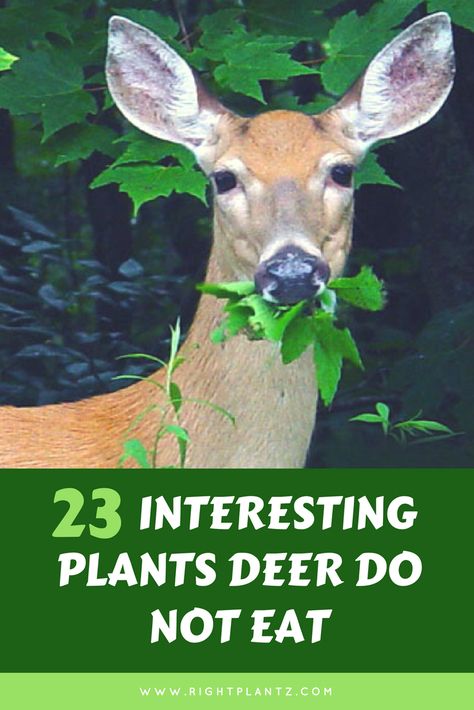 Still, it makes an attractive upright accent plant when combined with other annuals in containers or beds.
Still, it makes an attractive upright accent plant when combined with other annuals in containers or beds.
SHOP NOW
kuenlinGetty Images
11 of 15
Angelonia
Also called summer snapdragon, this long-blooming annual is usually ignored by deer. It comes in every color of the rainbow, so it's smashing in containers or beds.
SHOP NOW
Orest LyzhechkaGetty Images
12 of 15
Marigold
These cheerful annuals have been popular since your grandmother's day because they're super-hardy, they bloom all season long until a hard frost, and they are easy to grow. Their scented foliage is not tasty to deer.
SHOP NOW
Jacky Parker PhotographyGetty Images
13 of 15
Butterfly Bush
Butterflies will flock to this shrub, and deer won't! Look for new types that are more manageable in size and aren't invasive.
SHOP NOW
Oksana ChaunGetty Images
14 of 15
Sweet Alyssum
Sweet alyssum is a beautiful annual that looks lovely draping out of pots and containers or spilling over the edges of walkways or walls. It's a pollinator magnet, but not preferred by deer because of its honey-scented blooms.
It's a pollinator magnet, but not preferred by deer because of its honey-scented blooms.
SHOP NOW
Anastasiia Burlakova
15 of 15
Lamb's Ears
Besides having a very cute name, the little rounded, fuzzy leaves of the lamb's ear plant aren't appealing to deer. Plant this perennial in mixed borders or along walks.
SHOP NOW
Here's How to Plan Your Vegetable Garden Layout
Arricca Elin Sansone Arricca SanSone has written about health and lifestyle topics for Prevention, Country Living, Woman's Day, and more.
Deer Resistant Plants: Top Bambi Bestsellers For Growth 💡 Gardening | Ru.homeinteriorz.com
- List of deer-resistant perennials
- List of deer-resistant shrubs
- List of refractory lamps
- List of deodorous decorative herbs
- List of protective coatings about lists of deer plants? It is, after all, a known fact that Bambi is not fussy about what he eats when he is is really hungry.
 But if you're not ready to install deer fencing, you'll at least need to play with the odds on your side. That's what it's about below. Think of it like a list of Bambi's least favorite products. This is not about guarantees, but about reducing the chances of damage to your landscape.
But if you're not ready to install deer fencing, you'll at least need to play with the odds on your side. That's what it's about below. Think of it like a list of Bambi's least favorite products. This is not about guarantees, but about reducing the chances of damage to your landscape. -
List of deer-resistant perennials
In our quest to pluck Bambi, it is often not necessary to sacrifice our project plans ("tune", "yes", "sacrifice", "no"). That's a good thing too: after all, why would we even bother landscaping if the end result - in the name of the court's bumby proof - didn't please the eye? Luckily, you'll find this list of perennials filled with gorgeous plants that fulfill a variety of needs in your design plan.
Do you need a low-growing plant with yellow flowers for your rock garden, which is not usually eaten by Bambi? How about a long flowering perennial that looks great as a border plant? Or a tall perennial that you can grow in the back row of a gardener's planting? We list all of these and more in this list of perennials.
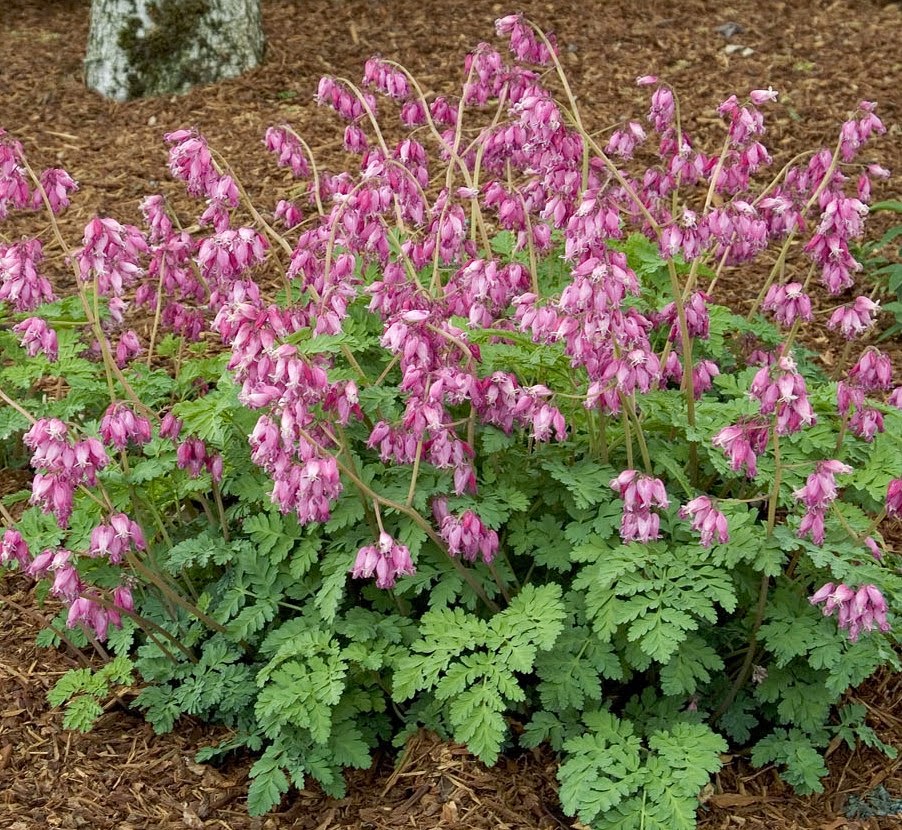
-
List of deer-resistant shrubs
Don't think that because they are usually bigger and stronger than perennials, shrubs are somehow less likely to appear on the Bambi menu. On the contrary, arborvitae, for example, is one of his favorite snacks. As with perennials, we must select and select our shrubs to minimize the chance of damage.
What type of bush are you looking for? In our article we will discuss the following examples:
- Shrubs grown for their foliage, for example, you hedge
- Shrubs grown for their flowers that can serve as patterns in your landscape
- A shrub that fits in #1 and #2
-
Refractory Lamp List
Fortunately, deer plants are well represented in the following two categories: spring-blooming bulbs and ornamental grasses.
Whether they ward off strong odors to the spring breeze and/or are toxic (or both) or simply don't taste good to this biggest of garden pests.
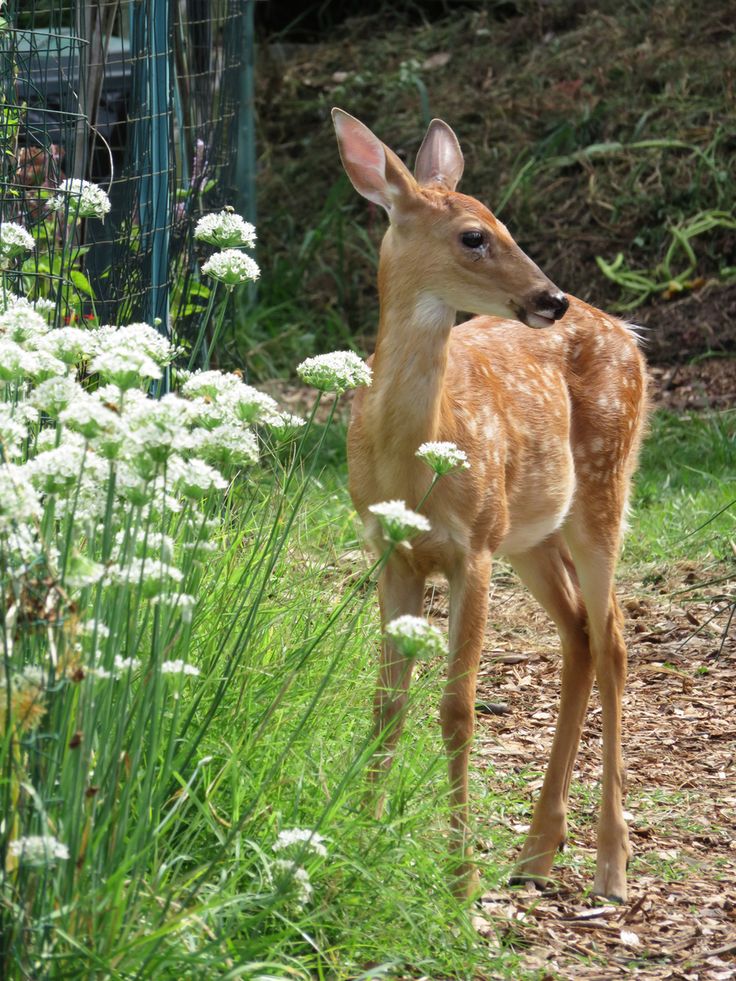 Spring bulbs provide several options for protection against bambi. This is welcome news for you, who has everything he can do to fight off incursions against his spring bulbs made by rabbits and squirrels without worrying about another pest joining freedom for all.
Spring bulbs provide several options for protection against bambi. This is welcome news for you, who has everything he can do to fight off incursions against his spring bulbs made by rabbits and squirrels without worrying about another pest joining freedom for all. -
List of deodorizing ornamental grasses
Given that the Bambi is a grazing animal, it can be assumed that he would like to eat ornamental grasses, generally speaking. But it would be wrong, and we would be happy to be wrong, we might add!
Many ornamental grasses are herding plants. In this brief introduction, we will limit ourselves to listing just a few examples:
- Short type
- Intermediate height type
- High type
- An example of how people use as if it were an ornamental grass, but which is actually in the Lily family
-
List of protective coverings for deer
Soils can be counted among the true workhorses of the landscape.
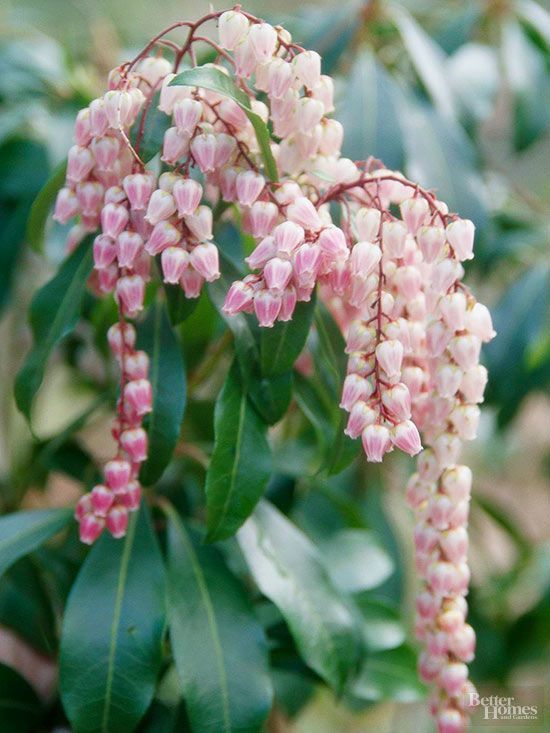 As low maintenance vegetation, they can save you money in the long run. But they do more than just save money. Have you ever mowed grass on a steep slope? Such a complex task is exciting, time-consuming and potentially dangerous. Replacing the grass in such a place with a reliable ground cover can be genius on your part.
As low maintenance vegetation, they can save you money in the long run. But they do more than just save money. Have you ever mowed grass on a steep slope? Such a complex task is exciting, time-consuming and potentially dangerous. Replacing the grass in such a place with a reliable ground cover can be genius on your part. But the ground cover, pursued by pests, can hardly be considered "reliable". This is where protective reindeer herders come into play. For some examples, see the list in the article above.
-
List of deer gums
Finally, there are many trees that are also resistant to deer. It is especially important that a tree in the country of deer has this quality, when young : Bambi could easily bite a small specimen. You don't want to go out into the yard in the morning to find that a newly planted seedling has been reduced to a bare branch, do you?
We provide you with many options in the list linked above.
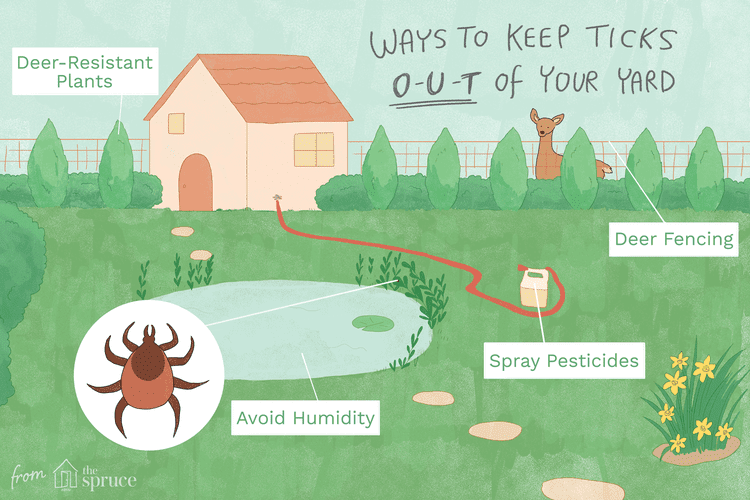 You can find a pattern for you, whether you're in the market for a flowering tree, a shade tree, an evergreen tree, or an autumn foliage superstar.
You can find a pattern for you, whether you're in the market for a flowering tree, a shade tree, an evergreen tree, or an autumn foliage superstar.
Video instruction: Maral root. 04.
7 Deer Resistant Plants to Repel Them
If you find deer nibbling in your backyard, you will need to plant some deer resistant plants to repel them. This is often the case if you enjoy growing vegetables or have learned how to grow tomatoes for a juicy crop. While they may look cute whether you live in the suburbs or on large estates, deer are a common plant pest in the US and can undo all the hard work you've done in your garden. Luckily, there are some plants that deer won't eat, so if your area has a large deer population, planting them could save your beautiful garden from destruction. Luckily, there are also some plants and flowers that will even scare off deer, so you'll have a better chance of warding off these beautiful but pesky pests.
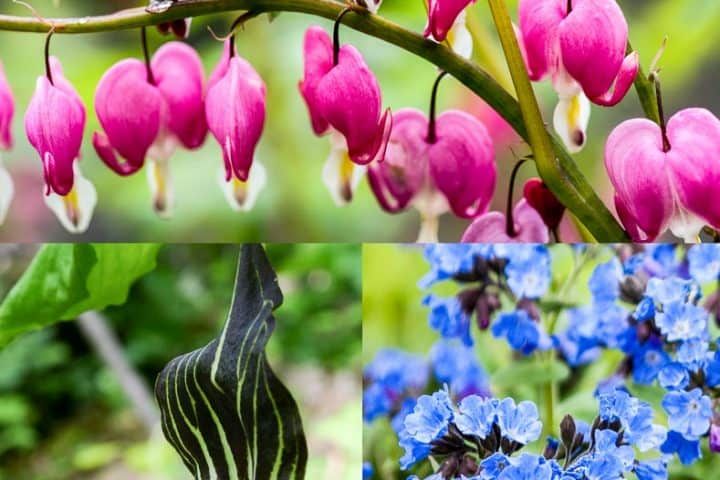 Here are 7 deer resistant plants.
Here are 7 deer resistant plants. 7 plants resistant to deer
As a general rule, deer tend to stay away from fragrant flora, hating the taste of strongly scented flowers and herbs. While they often prefer soft, bland flowers, be aware that local deer may have different favorites depending on which part of the country you're in. Therefore, it is worth contacting the nearest nursery or garden center for advice in the area of residence. In the meantime, here are a few common deer-resistant plants you should plant in your garden to keep deer at bay.
1. Sunflowers
Sunflowers If you have learned how to plant sunflowers, you will be glad to know that deer will not approach them. Generally, deer don't like the rough texture of the leaves, so they're less likely to bite into them. In addition, sunflowers are known to reach gigantic heights of up to two meters and come in a wide variety of colors, including rusty red, orange, green, and even white, making them a beautiful and imposing addition to any garden.

2. Peonies
Pink peonies As a rule, deer do not come close to fragrant plants, and peonies have a strong smell. Also, they don't like the taste and juice inside the stems, which is sure to turn them off. So, if you want to maintain a colorful garden throughout the year, peonies are the perfect deer-resistant plant.
3. Sage
Sage This popular herb can be aromatic to eat, but deer hate the strong smell and taste of the leaves. In fact, deer tend to stay away from any aromatic herbs or plants, including rosemary and lavender. However, if they are tempted to eat a sage plant, they are more likely to eat the flowers rather than the foliage.
4. Lavender
Lavender Like sage, lavender has a strong aromatic smell that deer do not like. This classic perennial with its deep purple tones has delicate foliage with a recognizable fragrance. While lavender is not generally considered dangerous to animals, it can be poisonous to them if eaten in large quantities.
 Keep this in mind when planting lavender, especially if you have pets.
Keep this in mind when planting lavender, especially if you have pets. 5. Foxglove
Pink Foxglove These tall, perennial flowers may look pretty, but they are actually poisonous to deer. For this reason, deer stay away and rarely eat them. Colors range from purple and pink to yellow and cream, and most cultivars have flowers all over the stem. Because foxgloves are shade-loving plants, they thrive in dry shade and can grow up to 3 to 5 feet. Be aware that this plant is also toxic to humans and pets if ingested.
6. Oriental poppy
Orange poppies Poppies have a strong smell and taste that repels deer. These beautiful flowers may be small but are certainly hardy and need cooler temperatures to thrive. This makes them an excellent choice in cold climates. If clusters of poppies grow around the garden, this will scare away the deer.
7. Daffodils
Daffodils These spring-flowering plants taste repulsive to deer, and the foliage, stems, and flowers are actually poisonous to them, meaning that deer are unlikely to approach them.
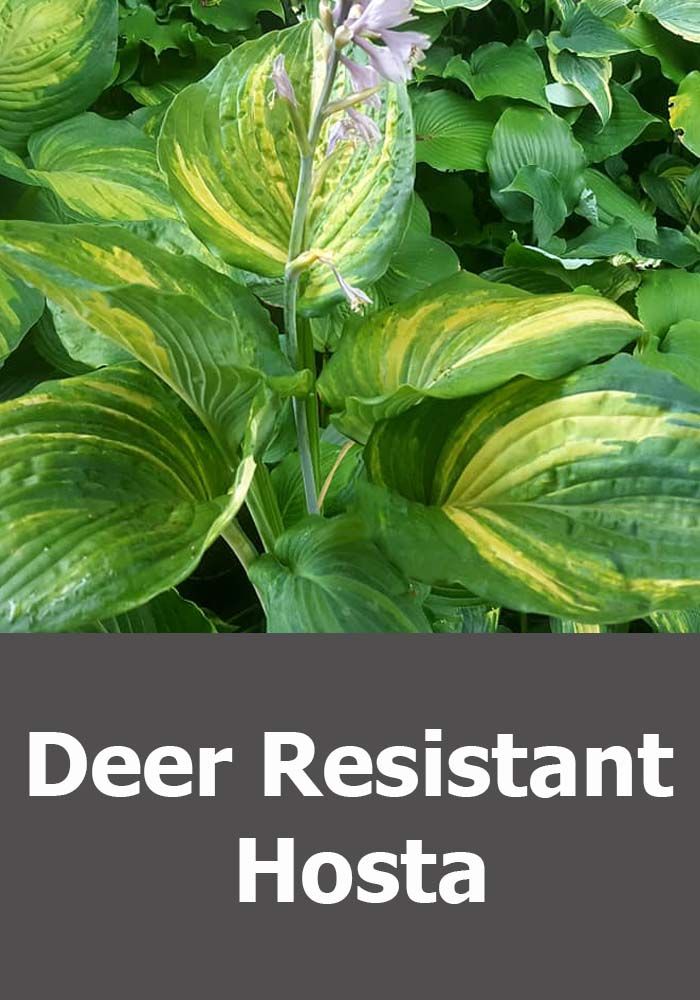
-










